Part 19: December 26 Broadcast

You are listening to BBC radio 4. In an hour, Simon Jones will be orating a variety of traditional Christmas stories. For the next hour, Professor David Stephenson will be presenting a documentary on the second 80 years war of the eighteenth century. This series will be running every third day, up to 50 episodes. If you want news of the current war in the Middle East please channel in to BBC radio 1.
 Good evening, and welcome to BBC radio 4. I’m Professor David Stephenson, professor of Dutch historical studies at Cambridge. This is the nineteenth part of our 50 episode special on the second 80 years war over Europe. Joining me for these broadcasts are fellow researchers and scholars Doctor Albert Andrews, specialist in German studies from the Berlin academy, Professor Robert Lowe, specialist in French studies at Cambridge, and a graduate student and technical assistant, Anton Thatcher. Last week, we discussed the Dutch in the Far East, and their involvement in the Japanese civil war of the 1700s.
Good evening, and welcome to BBC radio 4. I’m Professor David Stephenson, professor of Dutch historical studies at Cambridge. This is the nineteenth part of our 50 episode special on the second 80 years war over Europe. Joining me for these broadcasts are fellow researchers and scholars Doctor Albert Andrews, specialist in German studies from the Berlin academy, Professor Robert Lowe, specialist in French studies at Cambridge, and a graduate student and technical assistant, Anton Thatcher. Last week, we discussed the Dutch in the Far East, and their involvement in the Japanese civil war of the 1700s. Back in the west, the Dutch were hard pressed in virtually every theater. The Americas were faced with some of the strongest opposition that could be put against them, Europe saw the Dutch stretched far and abroad across their Empire, and in India, the Dutch were struggling to retain the momentum needed for a final push.
Back in the west, the Dutch were hard pressed in virtually every theater. The Americas were faced with some of the strongest opposition that could be put against them, Europe saw the Dutch stretched far and abroad across their Empire, and in India, the Dutch were struggling to retain the momentum needed for a final push.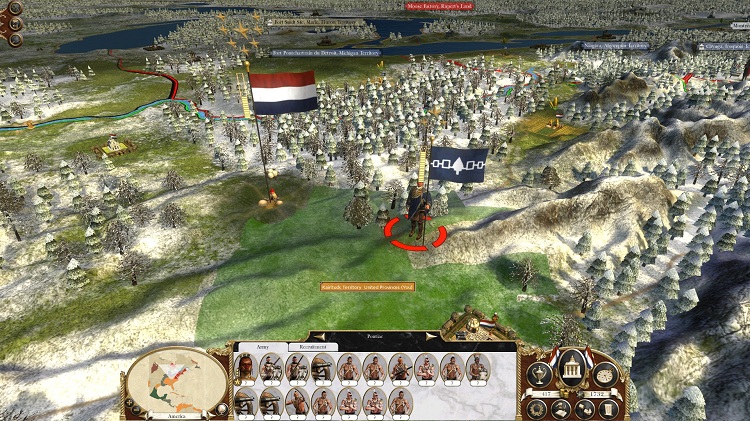
The Iroquois were able to distract a significant portion of the Dutch forces in the Americas. Approximately a third of the Dutch in the North American continent was bogged down away from the British.
 The Dutch had to get their priorities straight. With threats looming across their ever expanding empire, and the pressing need for armed forces in more and more fronts, the Dutch were finding it harder and harder to completely finance their military needs. While they had doubled the number of armies in India, they found that as they moved North, the country widened greatly. The Dutch’ current position was half the width across India as compared to the northernmost portion of the Maratha’s empire. This meant that even though the Dutch forces had been greatly expanded, as they advanced, their armies were once again being stretched apart.
The Dutch had to get their priorities straight. With threats looming across their ever expanding empire, and the pressing need for armed forces in more and more fronts, the Dutch were finding it harder and harder to completely finance their military needs. While they had doubled the number of armies in India, they found that as they moved North, the country widened greatly. The Dutch’ current position was half the width across India as compared to the northernmost portion of the Maratha’s empire. This meant that even though the Dutch forces had been greatly expanded, as they advanced, their armies were once again being stretched apart.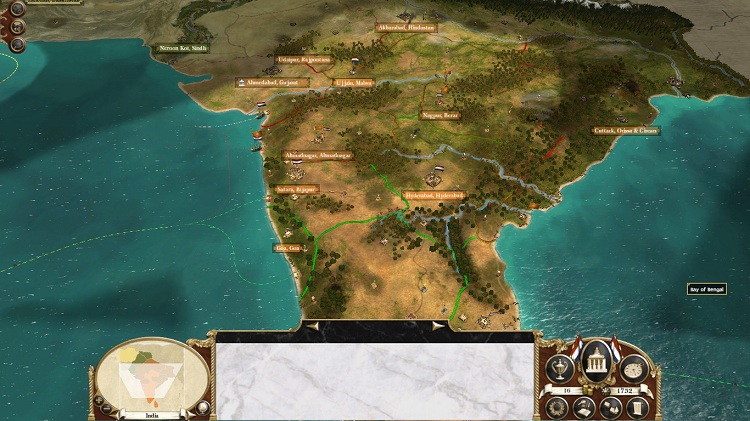
Though the Dutch had doubled their numbers in India since 1720, the sub continent expanded the further north they traveled necessitating even further expansion of the Dutch army.
 However, another push would put the Maratha into a last stand. Any more advancement past their next set of conquests would be final, with no more room for the Maratha to back up. Their last few forces were spread through their Empire raiding the Dutch, hoping to slow the behemoth.
However, another push would put the Maratha into a last stand. Any more advancement past their next set of conquests would be final, with no more room for the Maratha to back up. Their last few forces were spread through their Empire raiding the Dutch, hoping to slow the behemoth. The raids were to no avail however, with the Dutch advancing across four provinces, two at a time, taking them across another quarter of the sub continent. Over the years, the Dutch had been slowly building up their forces with the best the V.O.C. could get. By comparison, the Maratha had been pushed in to desperation, throwing thousands of poorly trained men into the fray, some armed with old local swords. Many were only good for raiding poorly defended towns and factories, running as a somewhat professional mob of vandals across Dutch territory before they were caught and scattered by the V.O.C. When forced into a committed defense, they were utterly hopeless.
The raids were to no avail however, with the Dutch advancing across four provinces, two at a time, taking them across another quarter of the sub continent. Over the years, the Dutch had been slowly building up their forces with the best the V.O.C. could get. By comparison, the Maratha had been pushed in to desperation, throwing thousands of poorly trained men into the fray, some armed with old local swords. Many were only good for raiding poorly defended towns and factories, running as a somewhat professional mob of vandals across Dutch territory before they were caught and scattered by the V.O.C. When forced into a committed defense, they were utterly hopeless.
The well disciplined line infantry of the V.O.C. had almost completely replaced local or other low quality infantry by 1733.
 Why did the Maratha stop relying primarily on the Barghir? To a certain extent, it was financial. The Barghir were funded by the state using the much more expensive European recruitment system. They were also armed with expensive imported European muskets, or ones built by European factories within India. With Dutch control of the sea and factories around India, the guns could only be acquired through the expensive land route through Persia and Afghanistan, generally consisting of guns of Ottoman make. These guns were exorbitantly expensive by the 1730s.
Why did the Maratha stop relying primarily on the Barghir? To a certain extent, it was financial. The Barghir were funded by the state using the much more expensive European recruitment system. They were also armed with expensive imported European muskets, or ones built by European factories within India. With Dutch control of the sea and factories around India, the guns could only be acquired through the expensive land route through Persia and Afghanistan, generally consisting of guns of Ottoman make. These guns were exorbitantly expensive by the 1730s.
The Maratha were essentially reduced to mass recruiting expendable, low quality rabble. More an armed mob of arsonists, they were used to torch Dutch factories and farms rather than fight.
 This meant battalions were raised, in many instances, armed with swords. The best swordsmen of their empire had exacted a horrific toll on the Dutch in the early years of the war, but their battalions were shattered in the process. Replacing them would take decades of dedicated training. Decades that the Maratha didn’t have. The new recruits were simply peasants, factory workers or miners given a poorly crafted sword with a minimum of training and faltering morale. The early years of Dutch militia and sepoys fighting dedicated Barghir had reversed. When the war had started, the Dutch had only managed to maintain their toehold in India thanks to the ongoing war between the Maratha and the Mughal. With their overwhelming force concentrated just south of the Maratha, the Dutch were able to capitalize and grow.
This meant battalions were raised, in many instances, armed with swords. The best swordsmen of their empire had exacted a horrific toll on the Dutch in the early years of the war, but their battalions were shattered in the process. Replacing them would take decades of dedicated training. Decades that the Maratha didn’t have. The new recruits were simply peasants, factory workers or miners given a poorly crafted sword with a minimum of training and faltering morale. The early years of Dutch militia and sepoys fighting dedicated Barghir had reversed. When the war had started, the Dutch had only managed to maintain their toehold in India thanks to the ongoing war between the Maratha and the Mughal. With their overwhelming force concentrated just south of the Maratha, the Dutch were able to capitalize and grow.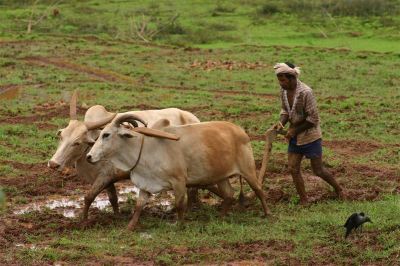
Simple farmers were often pressed into military service. With too few farmers working in the fields, food had to be imported to many places in India.
 The Dutch, in the early 1730s, advanced to Cuttack, Nagpur, Ahmadnagar and Ujjain, besieging and trapping each force allowing follow up armies to advance into the second layer of Maratha defenses. This bounding assault taking up tremendous stretches of Maratha land put nearly all of India under Dutch control. All that was left for the Dutch was to secure and placate their holdings in preparation for their final push.
The Dutch, in the early 1730s, advanced to Cuttack, Nagpur, Ahmadnagar and Ujjain, besieging and trapping each force allowing follow up armies to advance into the second layer of Maratha defenses. This bounding assault taking up tremendous stretches of Maratha land put nearly all of India under Dutch control. All that was left for the Dutch was to secure and placate their holdings in preparation for their final push.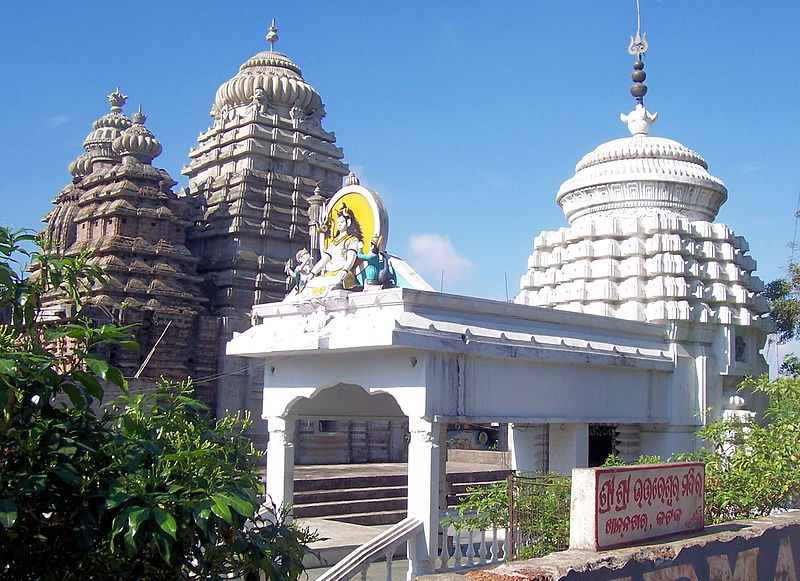
Uttareswar temple in Cuttack. Cuttack gave the Dutch the opportunity to advance to Calcut and begin enveloping the Maratha by cutting them off of the eastern coast.
 These battles were done much as they had in the early years, tactically speaking. The Maratha were far too used to the advantage in infantry and cavalry, and had not adapted at all to the reversal. The Dutch managed to use the exact same tactics they had in previous years to even greater effect. They always attempted to force the Maratha into a concave, attack them in the back with cavalry, and using artillery from afar, all allowing the Dutch V.O.C. to defeat Maratha armies with only a handful of casualties.
These battles were done much as they had in the early years, tactically speaking. The Maratha were far too used to the advantage in infantry and cavalry, and had not adapted at all to the reversal. The Dutch managed to use the exact same tactics they had in previous years to even greater effect. They always attempted to force the Maratha into a concave, attack them in the back with cavalry, and using artillery from afar, all allowing the Dutch V.O.C. to defeat Maratha armies with only a handful of casualties.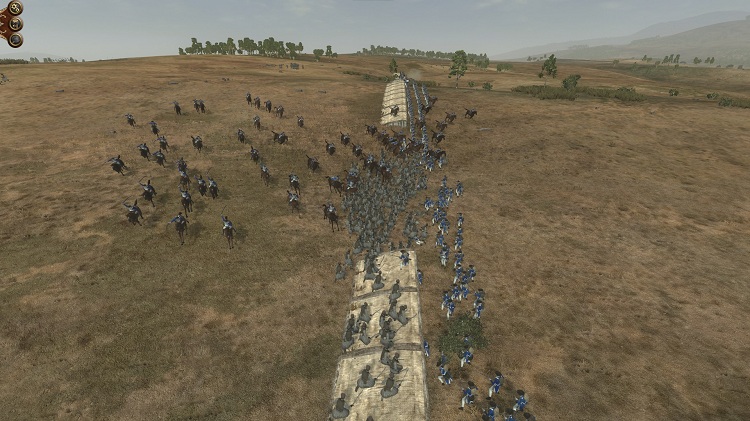
The Dutch, still relying on flanking maneuvers were able to easily dispatch the Maratha.
 In 1734 the Dutch had their backs to the sea, their armies focused North against the Maratha. With the entirety of the Dutch forces directly in position to oppose the Maratha, and sufficient control at sea to prevent a flanking maneuver, the Maratha had no real hope of replicating the miraculous Dutch victories of the early years. After over a decade of fighting, the end of the war in India was in sight.
In 1734 the Dutch had their backs to the sea, their armies focused North against the Maratha. With the entirety of the Dutch forces directly in position to oppose the Maratha, and sufficient control at sea to prevent a flanking maneuver, the Maratha had no real hope of replicating the miraculous Dutch victories of the early years. After over a decade of fighting, the end of the war in India was in sight. And the end was also in sight in Europe, with the Dutch finally poised to crush the last of Austrian resistance. After a year of besieging Zagreb, the Austrian force, ragged, starved and demoralized formed a last charge against the Dutch, with many of the soldiers surrendering. Now, only Poland and Prussia remained in central Europe, and with Austria out of the picture, the dominant Poles were able to focus every ounce of their effort on the faltering Prussians.
And the end was also in sight in Europe, with the Dutch finally poised to crush the last of Austrian resistance. After a year of besieging Zagreb, the Austrian force, ragged, starved and demoralized formed a last charge against the Dutch, with many of the soldiers surrendering. Now, only Poland and Prussia remained in central Europe, and with Austria out of the picture, the dominant Poles were able to focus every ounce of their effort on the faltering Prussians.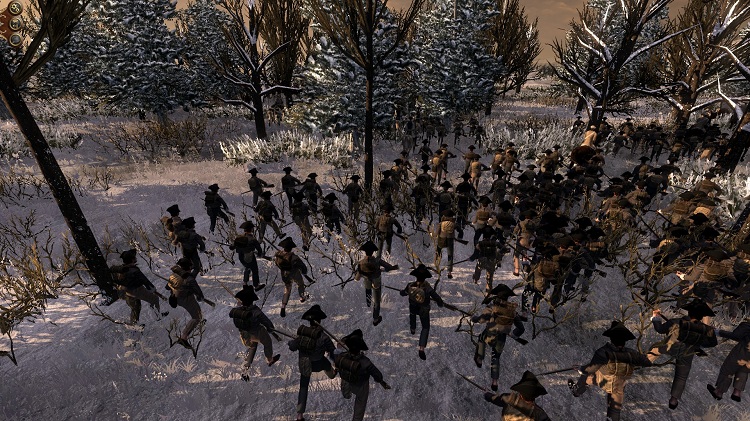
The last Austrian army near Zagreb.
 The Dutch however, still could not move against the British. At the very least, not with any confidence. With the Poles very near their goal of conquering the Prussians, the Dutch were weary that they would be the next target of Polish aggression. The Dutch were able to stave off another war opening up against them by paying off the Polish government, but they could not yet trust that their borders were secure.
The Dutch however, still could not move against the British. At the very least, not with any confidence. With the Poles very near their goal of conquering the Prussians, the Dutch were weary that they would be the next target of Polish aggression. The Dutch were able to stave off another war opening up against them by paying off the Polish government, but they could not yet trust that their borders were secure.
The Polish were renowned for their cavalry. Though outdated, their reputation, and their massive infantry armies to support them dissuaded the Dutch from engaging them in a land war at the time.
 This meant the most likely means by which they could attack the British was after the conquest of India. Once pushed straight to the border with the weak Mughal Empire along a small strip of land that the Ottomans could invade them through, the Dutch could retreat their V.O.C. company infantry and ship them to Britain to fight their way through Ireland to Scotland to England, possibly joining up with the Dutch stationed in Amsterdam linking up to fight the British at Portsmouth.
This meant the most likely means by which they could attack the British was after the conquest of India. Once pushed straight to the border with the weak Mughal Empire along a small strip of land that the Ottomans could invade them through, the Dutch could retreat their V.O.C. company infantry and ship them to Britain to fight their way through Ireland to Scotland to England, possibly joining up with the Dutch stationed in Amsterdam linking up to fight the British at Portsmouth.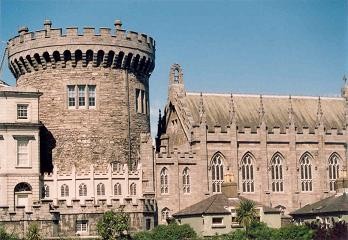
The Dutch figured the Irish would be less significantly reinforced compared to England and Scotland, allowing them an easy toe hold on to the British isles.
 This was the Dutch strategy as of 1733, hoping to destroy the English by 1745. But for the current decade, the Dutch had to consider their progress in the Americas. Not wanting to lose control of the theater, the Dutch absolutely needed to capture Williamsburg. A military fort and narrow state, it would be far easier to control and prevent raids than their current position, and would allow the training of higher quality line infantry closer to the front lines. Taking and holding Virginia was their first priority. If they could use that position to push back then counter attack the superior British numbers, the Dutch would be able to stall the war in the Americas until Britain fell.
This was the Dutch strategy as of 1733, hoping to destroy the English by 1745. But for the current decade, the Dutch had to consider their progress in the Americas. Not wanting to lose control of the theater, the Dutch absolutely needed to capture Williamsburg. A military fort and narrow state, it would be far easier to control and prevent raids than their current position, and would allow the training of higher quality line infantry closer to the front lines. Taking and holding Virginia was their first priority. If they could use that position to push back then counter attack the superior British numbers, the Dutch would be able to stall the war in the Americas until Britain fell.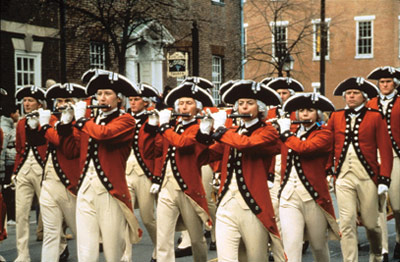
Red coat actors in Williamsburg. The city was a military base for the British.
 Things did not go smoothly with the Iroquois capturing Kentucky and destroying the small garrison forces the Dutch had used to cover their western flank. While they had a larger army, it had advanced north to prevent pillaging, and was out of position in regards to blocking the Iroquois army. They reversed their position and besieged Kentucky, but noted two more Iroquois armies in the region.
Things did not go smoothly with the Iroquois capturing Kentucky and destroying the small garrison forces the Dutch had used to cover their western flank. While they had a larger army, it had advanced north to prevent pillaging, and was out of position in regards to blocking the Iroquois army. They reversed their position and besieged Kentucky, but noted two more Iroquois armies in the region.
Kentucky and its garrison was taken by the Iroquois, the Dutch having to reverse a forward army to retake it.
 The Dutch army, re-consolidated around Kentucky found the Iroquois to be essentially identical to the Cherokee. Lacking industrialized equipment and production techniques, the Iroquois could only defeat the Dutch where they severely outnumbered them.
The Dutch army, re-consolidated around Kentucky found the Iroquois to be essentially identical to the Cherokee. Lacking industrialized equipment and production techniques, the Iroquois could only defeat the Dutch where they severely outnumbered them.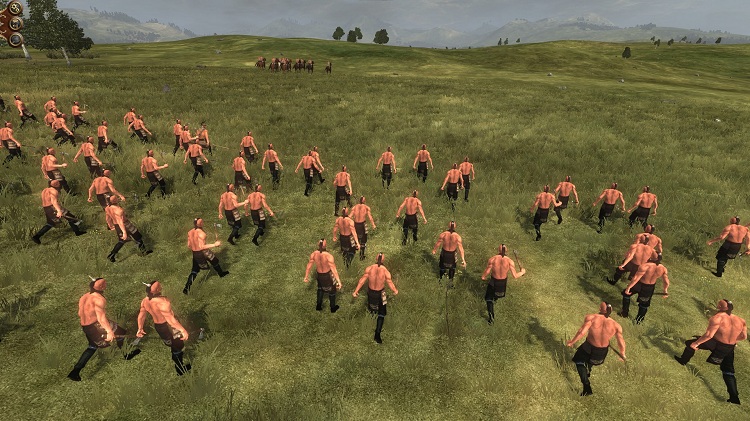
Iroquois native armies were armed with stone age weapons in many instances, putting them in a sorry state compared to the industrial Dutch.
 Now however, all colonial line infantry recruited were to be arrayed against the British along the East Coast. This meant that the small Dutch army in Kentucky had to begin recruiting native warriors to bolster their forces. These forces diluted the quality of the Dutch army, and would likely be disbanded at a later date, but for now they were a necessity to holding the theater.
Now however, all colonial line infantry recruited were to be arrayed against the British along the East Coast. This meant that the small Dutch army in Kentucky had to begin recruiting native warriors to bolster their forces. These forces diluted the quality of the Dutch army, and would likely be disbanded at a later date, but for now they were a necessity to holding the theater.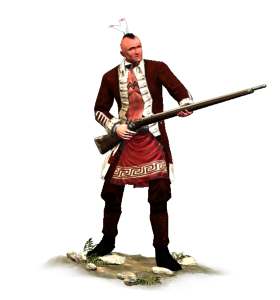
Native musket auxiliaries were an incredibly poor unit, using their muskets in sporadic fire from scattered formations, they fought as skirmishers, but lacked the efficacy, accuracy or range that later riflemen had.
 Settling to the limited forces available in the west, the Dutch could turn their attention to a Northward march. While the Dutch had settled on a defensive strategy in the general sense, they decided the stand would have to be in Williamsburg Virginia. Their only other alternative was to fall back to Florida where they could maintain their recruitment close to the front lines, and use their fortresses to repel British assault. The Dutch could fall back to St. Augustine if they faltered in their advance, and so the Dutch moved their armies north in the Williamsburg Push.
Settling to the limited forces available in the west, the Dutch could turn their attention to a Northward march. While the Dutch had settled on a defensive strategy in the general sense, they decided the stand would have to be in Williamsburg Virginia. Their only other alternative was to fall back to Florida where they could maintain their recruitment close to the front lines, and use their fortresses to repel British assault. The Dutch could fall back to St. Augustine if they faltered in their advance, and so the Dutch moved their armies north in the Williamsburg Push.
Williamsburg was a solid recruitment ground in the Americas, and would be an ideal forward military base for the Dutch.
 This was the first major engagement in the Americas that the Dutch had engaged in. The British, with over two thousand seven hundred men to the Dutch two thousand four hundred, the Dutch had to break past the British armies to make their way to Williamsburg.
This was the first major engagement in the Americas that the Dutch had engaged in. The British, with over two thousand seven hundred men to the Dutch two thousand four hundred, the Dutch had to break past the British armies to make their way to Williamsburg.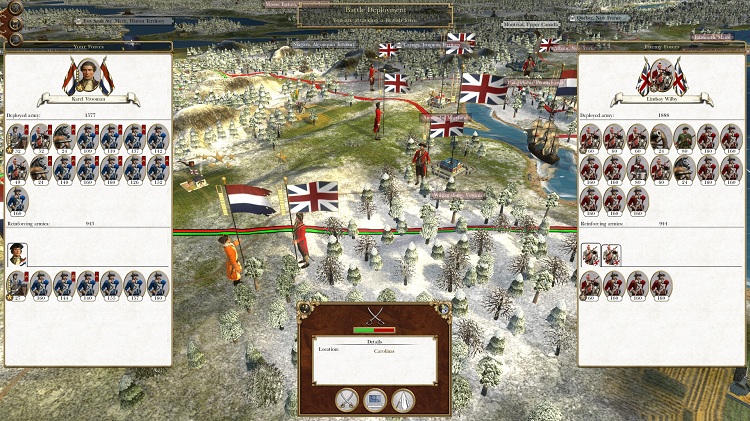
The Dutch engage the British as they push northward.
 The Battle of Williamsburg Push started with a relatively even stand off as both armies advanced to just beyond gunshot of one another. Dutch horse artillery had been rushed into a strong position on the Dutch left wing, which was pushed further forward than their right. The battlefield was split between the two armies by small ridges and undulations in the fields that prevented men from forming a solid line or advancing in good order, meaning neither side wished to advance any further, hoping to lure the enemy into making the first move.
The Battle of Williamsburg Push started with a relatively even stand off as both armies advanced to just beyond gunshot of one another. Dutch horse artillery had been rushed into a strong position on the Dutch left wing, which was pushed further forward than their right. The battlefield was split between the two armies by small ridges and undulations in the fields that prevented men from forming a solid line or advancing in good order, meaning neither side wished to advance any further, hoping to lure the enemy into making the first move.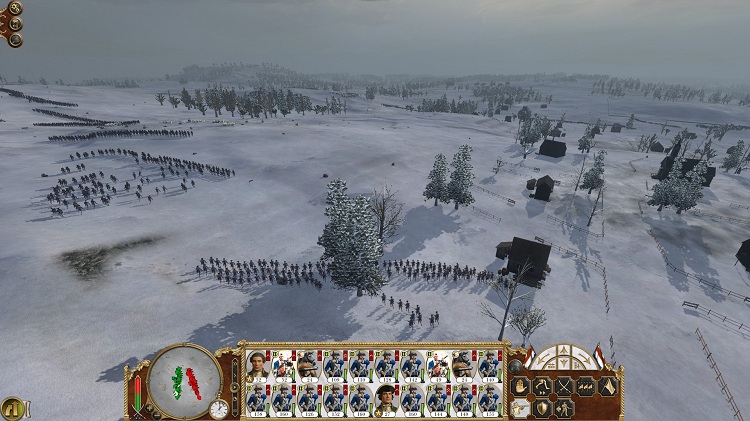
The Dutch advancing to form a line in front of the ridged, broken terrain. Their left moved forward faster and further than the right.
 The Dutch, able to move their artillery rapidly and efficiently set them up to the left, within close range of the line infantry which advanced towards the British. The Dutch, firing from terrible angles into the hill covered British were suffering atrocious casualties, but had only moved forward to hold the British in place so the artillery could fire grape shot into the British right. The British, seeing a chance at a flank moved several additional battalions to reinforce.
The Dutch, able to move their artillery rapidly and efficiently set them up to the left, within close range of the line infantry which advanced towards the British. The Dutch, firing from terrible angles into the hill covered British were suffering atrocious casualties, but had only moved forward to hold the British in place so the artillery could fire grape shot into the British right. The British, seeing a chance at a flank moved several additional battalions to reinforce.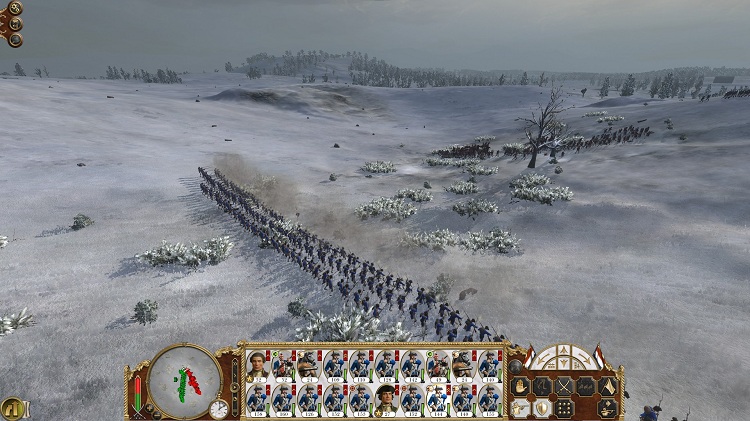
The engagement began on the Dutch left. The Dutch left flank was trading blows with several battalions of British line, and forcing the British to move their line right.
 The combination of infantry and cavalry on the British side had caused near catastrophic casualties to the Dutch flank, but grape shot had managed to repel them, destroying several British battalions and earning the Dutch the flank and a free path to the British foot artillery on their right flank. The British, forced to reinforce their right spread out their line and folded their left flank back more towards the center, leaving their far left howitzers exposed to a Dutch infantry charge. Two battalions moved back to intercept the Dutch advancing off their left flank, and were countered by four Dutch battalions shadowing their movement. Unable to further reinforce their left flank with the Dutch threatening to wrap around their right, the British had to allow their left to fall, granting the Dutch the flank.
The combination of infantry and cavalry on the British side had caused near catastrophic casualties to the Dutch flank, but grape shot had managed to repel them, destroying several British battalions and earning the Dutch the flank and a free path to the British foot artillery on their right flank. The British, forced to reinforce their right spread out their line and folded their left flank back more towards the center, leaving their far left howitzers exposed to a Dutch infantry charge. Two battalions moved back to intercept the Dutch advancing off their left flank, and were countered by four Dutch battalions shadowing their movement. Unable to further reinforce their left flank with the Dutch threatening to wrap around their right, the British had to allow their left to fall, granting the Dutch the flank.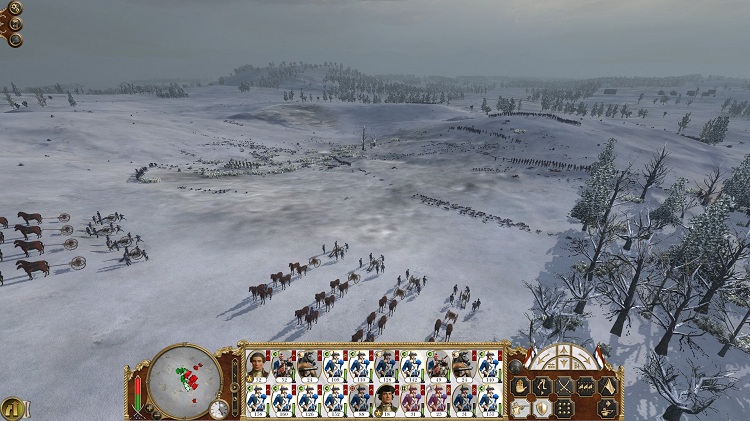
Three Dutch battalions were demolished by the British, but the cannon fire managed to scour the British right from the field.
 The Dutch, now with total artillery control, forced the British to advance on the right flank, hoping to finish off the weakened Dutch, pulling their entire force away from the left to try and overbear the Dutch. This movement forced them into the broken up terrain allowing the Dutch to fire into their ranks before they could form a line, causing a chain rout across the British forces, which fell back North of Virginia.
The Dutch, now with total artillery control, forced the British to advance on the right flank, hoping to finish off the weakened Dutch, pulling their entire force away from the left to try and overbear the Dutch. This movement forced them into the broken up terrain allowing the Dutch to fire into their ranks before they could form a line, causing a chain rout across the British forces, which fell back North of Virginia.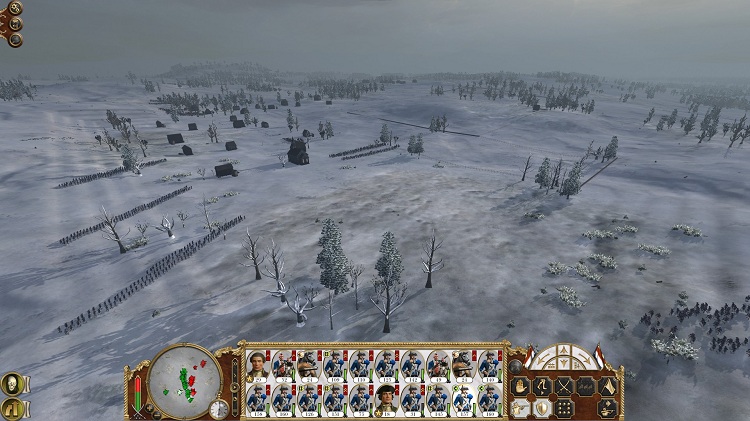
Dutch battalions shadowing the British move to the left.
 The Dutch managed to rush their forces into the emptied military barracks in Williamsburg hoping to fortify and reinforce the city before they could be overwhelmed by the British. Plans on expanding the barracks fortifications into a full scale fortress to help the Dutch hold Virginia were put on hold due to a lack of funding, but would commence by 1735.
The Dutch managed to rush their forces into the emptied military barracks in Williamsburg hoping to fortify and reinforce the city before they could be overwhelmed by the British. Plans on expanding the barracks fortifications into a full scale fortress to help the Dutch hold Virginia were put on hold due to a lack of funding, but would commence by 1735.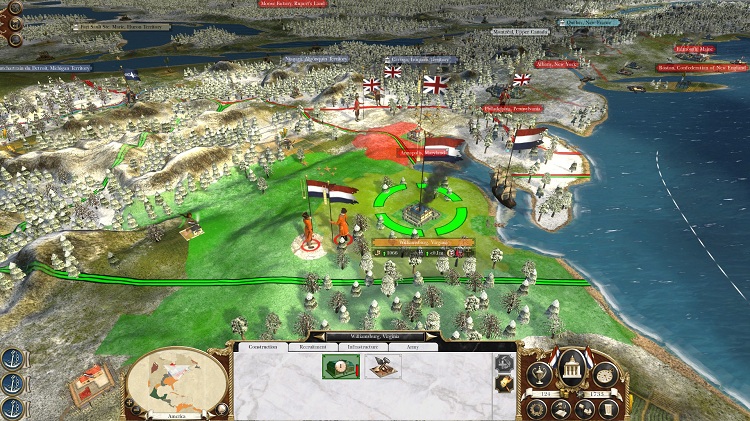
The Dutch in Williamsburg. Reinforcing the city would give the Dutch a solid strong point to control their position.
 This put the Dutch into a strong position across much of their Empire, but with political stirrings in Central Europe, the Dutch could not rest yet. The Polish had threatened to go to war with the Dutch on several times, and had to be paid off to avoid even further conflict. The Dutch, still reeling with rebellions and revolts in Austria couldn’t afford to divert even more money towards Central Europe at the time, at least until they had taken control of India and stabilized the Americas. Yes another problem away from the English channel, the Dutch were increasingly frustrated by their inability to end the war with Britain.
This put the Dutch into a strong position across much of their Empire, but with political stirrings in Central Europe, the Dutch could not rest yet. The Polish had threatened to go to war with the Dutch on several times, and had to be paid off to avoid even further conflict. The Dutch, still reeling with rebellions and revolts in Austria couldn’t afford to divert even more money towards Central Europe at the time, at least until they had taken control of India and stabilized the Americas. Yes another problem away from the English channel, the Dutch were increasingly frustrated by their inability to end the war with Britain.
The Polish declare war on the Dutch, but were paid enough to guarantee temporary peace. Having revealed the Polish hostility, the Dutch could not move back their forces.
 The Polish weren’t the only ones that threatened the Dutch position though. Their allies in the Mediterranean, and their trade partners across the globe had begun to resent the Dutch and their success. Many of these tiny nations did not have the means to actually move against the Western Atlantic Federation, and were far too terrified to declare war, but nations such as Russia, Sweden and the Ottoman Empire were eyeing the expansionist United Provinces, both wary of aggression and alert of any sign of weakness.
The Polish weren’t the only ones that threatened the Dutch position though. Their allies in the Mediterranean, and their trade partners across the globe had begun to resent the Dutch and their success. Many of these tiny nations did not have the means to actually move against the Western Atlantic Federation, and were far too terrified to declare war, but nations such as Russia, Sweden and the Ottoman Empire were eyeing the expansionist United Provinces, both wary of aggression and alert of any sign of weakness. The war had started to stagnate. The Dutch were still advancing, but for the past decade, it had been slow and often hampered by their opponents simply consolidating their position further inland, stretching and straining the Dutch forces. Their primary adversaries were still in the war, and would remain so for some time with no real chance of the Dutch to definitively end them. But with the Maratha running out of room to retreat, a full third of the Dutch army was about to find itself free to reinforce another theater of war.
The war had started to stagnate. The Dutch were still advancing, but for the past decade, it had been slow and often hampered by their opponents simply consolidating their position further inland, stretching and straining the Dutch forces. Their primary adversaries were still in the war, and would remain so for some time with no real chance of the Dutch to definitively end them. But with the Maratha running out of room to retreat, a full third of the Dutch army was about to find itself free to reinforce another theater of war. The question for the Dutch was no longer whether they could finally make progress in this war. It was now a matter of keeping Sweden and Poland from joining the war. If either did, the Dutch would not be able to advance any further, and if they declared war on the Dutch before their armies could be returned from India, they would be put into terribly dire straits.
The question for the Dutch was no longer whether they could finally make progress in this war. It was now a matter of keeping Sweden and Poland from joining the war. If either did, the Dutch would not be able to advance any further, and if they declared war on the Dutch before their armies could be returned from India, they would be put into terribly dire straits.Next, Simon Jones will be reading several classic Christmas stories. World news has been moved back an hour for today and for the rest of the Christmas season. If you want news of the current war in the Middle East please channel in to BBC radio 1. David Stephenson will be presenting more on the 80 years war in 3 days.